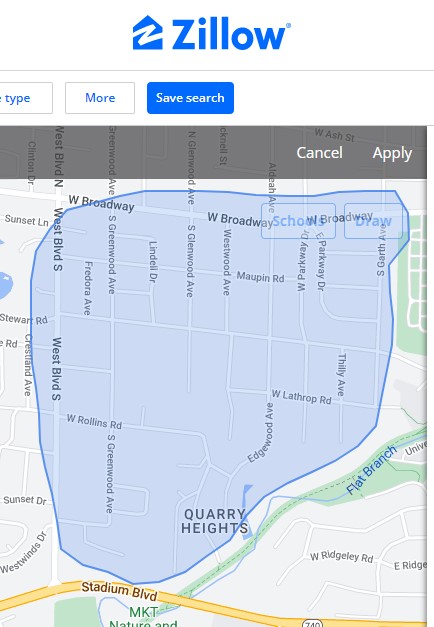One Panel

by Dennis Crouch
The Federal Circuit’s new choice in IBM v. Zillow Team, Inc., — F.4th — (Fed. Cir. Oct 17, 2022) is a companion situation a different current viewpoint, Weisner v. Google, — F.4th — (Fed. Cir. Oct 13, 2022). The two eligibility appeals had been determined a days aside by the similar a few-judge panel of Reyna, Hughes, and Stoll adhering to oral arguments held minutes apart. Equally district courts dismissed infringement lawsuits at the pleading stage and the “abstract idea” dilemma was up on charm.

The two appellate views are also parallel. In both circumstances Decide Hughes concluded that promises were ineligible as directed to abstract suggestions. Similarly, in each circumstances Choose Stoll concluded that the patentees had alleged plausible and precise specifics exhibiting that the claims embodied inventive principles. As such Decide Stoll concluded that dismissal on the pleadings–before weighing any evidence–was improper. But, the two cases have distinctive outcomes because of the third panel member, Decide Reyna. In IBM, Decide Reyna joined Judge Hughes’ viewpoint siding with the defendant. In Weisner, Judge Reyna joined Choose Stoll’s belief siding with the patentee.
Examine my write-up on Weisner: Dennis Crouch, Distinguishing Gathering Facts from Using Info, Patently-O (Oct 17, 2022).
To be crystal clear all a few judges agreed that most of the asserted statements have been invalid. The disagreement is in excess of a subset that, according to Judge Stoll at least, the patentees manufactured plausible and specific allegations ample to overcome a motion to dismiss.
Federal litigation commences with a plaintiff filing a complaint. In patent litigation, this is usually the patentee suing a defendant for patent infringement. Below the regulations, the criticism will have to include things like a “short and basic assertion … showing” that the patentee is entitled to reduction. FRCP R. 8. In Iqbal and Twombly, the Supreme Courtroom reinterpreted this rule to require nonconclusory allegations of certain points that make the lead to-of-motion plausible. If the grievance fails this standard, the defendant can request what was traditionally recognized as a “demurrer” and is now called a “motion to dismiss for failure to state a assert upon which relief can be granted” less than R. 12(b)(6) or “motion on the pleadings” underneath R. 12(c).
At the pleading stage, the courtroom commonly does not require the events to supply admissible proof to demonstrate their factual contentions. But, one particular trick with patent eligibility is that eligibility is a problem of legislation alternatively than a problem of actuality and the courts can have to have events to establish-up concerns of regulation very early-on in the lawsuit. This is particularly true in the context of patent eligibility where by, for the most component, the evidence is intrinsic proof such as the patent document alone and most likely the prosecution heritage file. But, eligibility can at situations also demand thought of extrinsic proof, such as irrespective of whether aspects of the claimed creation ended up, in-simple fact, now generic ideas to a person of talent in the artwork.

IBM’s asserted US7187389 claims a process of displaying layered knowledge on a map. The impression just higher than will come from IBM’s skilled exhibiting how the creation makes it possible for for buying of the different layers, and for rearranging the levels as properly and working with non-spatial visible clues this kind of as opacity to assistance show the layering. On charm, the judges all agreed that the statements are directed to the abstract notion of “organizing and exhibiting information and facts.” Despite the fact that the particular method claimed could be novel, the court’s Alice Phase-1 assessment clarifies that the promises do not recite any “improvement in computer technology” and instead depends upon practical measures these kinds of as “selecting” info “identifying” information and facts “matching” data “re-matching” details “displaying” information “rearranging” information and facts etc.
These types of purposeful assert language, without having far more, is insufficient for patentability underneath our regulation.
Slip Op. At Alice Step-2, the majority inquired as to any unique creative thought further than the abstract plan alone (and located none). Here, the courtroom again targeted on the purposeful limitations that it uncovered to be inadequate: “simply not enough under step two.”
In partial dissent, Choose Stoll looked notably to statements 9 and 13 that targeted on rearrangement of the levels and especially demanded “rearranging logic” and “re-matching logic.” Decide Stoll then examine the IBM criticism which explained how the difficulty of rearrangement of an extremely cluttered show is not a straightforward job — specially when you start out dealing with a significant selection of objects. Although pro testimony is not commonly necessary at the motion-to-dismiss phase, eligibility is unique and district courts are frequently making it possible for skilled declarations. In this scenario, IBM in fact hooked up its qualified declaration to the amended complaint by itself in buy to preempt the eligibility problem. The skilled testimony described the problems of rearranging and re-matching information in a way that is comprehensible on a show. The levels coupled with dynamic re-layering as claimed aid clear up this challenge, in accordance to the specialist.
In her selection, Choose Stoll study IBM’s particular allegations as supported by their specialist declaration and discovered them to make a plausible declare of a technological advancement sufficient satisfy Alice Phase 2. As such, Stoll would have reversed as to all those claims, as she did in Weisner.
The second patent at issue is IBM’s US9158789 which promises a strategy of “coordinated geospatial” mapping. The fundamental concept is that a consumer draws a certain place on a map, and then is offered filtered outcomes distinct to their specific variety. The determine earlier mentioned will come from IBM’s patent and demonstrates how the person can attract a boundary (the triangle). The listing is then populated with pertinent success from within the boundary. I employed this with Zillow (the accused infringer) when hunting for a property to invest in in a precise spot of Columbia Missouri. A screenshot of my neighborhood down below (no residences for sale although). 
Judge Hughes explains that the IBM claims are directed to the summary concept of :
Responding to a user’s variety of a portion of a displayed map by concurrently updating the map and a co-exhibited record of goods on the map.
Slip Op. In earning this Phase-1 dedication, the appellate courtroom appreciably overlapped the Step-2 analysis–holding that the claims are “result-oriented” instead than directed to complex advancements. When it dis achieving Stage-2, the court docket observed that the statements contained no ingenious strategy: The creation “was not directed to a personal computer-unique challenge and merely utilised properly-understood, routine, or conventional technologies (a normal-goal laptop or computer) to more promptly resolve the difficulty of layering and exhibiting visual knowledge.” The court also browse via the declare techniques and discovered them to be functionally claimed–a loser under Phase-1 and Move-2.
= = =
It is not obvious why Choose Reyna sided with the patentee in Weisner but with the accused infringer in IBM. My finest stab at distinguishing the two holdings is as follows. From these two scenarios, we could divide the statements into a few categories:
- Accumulating and organizing data (these are the invalid statements in Weisner)
- Gathering arranging and displaying data (these are the invalid statements in IBM) and
- Amassing organizing and using data (these are the valid claims in Weisner).
Examining between Decide Reyna’s sub silento strains, solutions of use that go beyond mere exhibit characterize the style of creation that is additional most likely to go muster.








